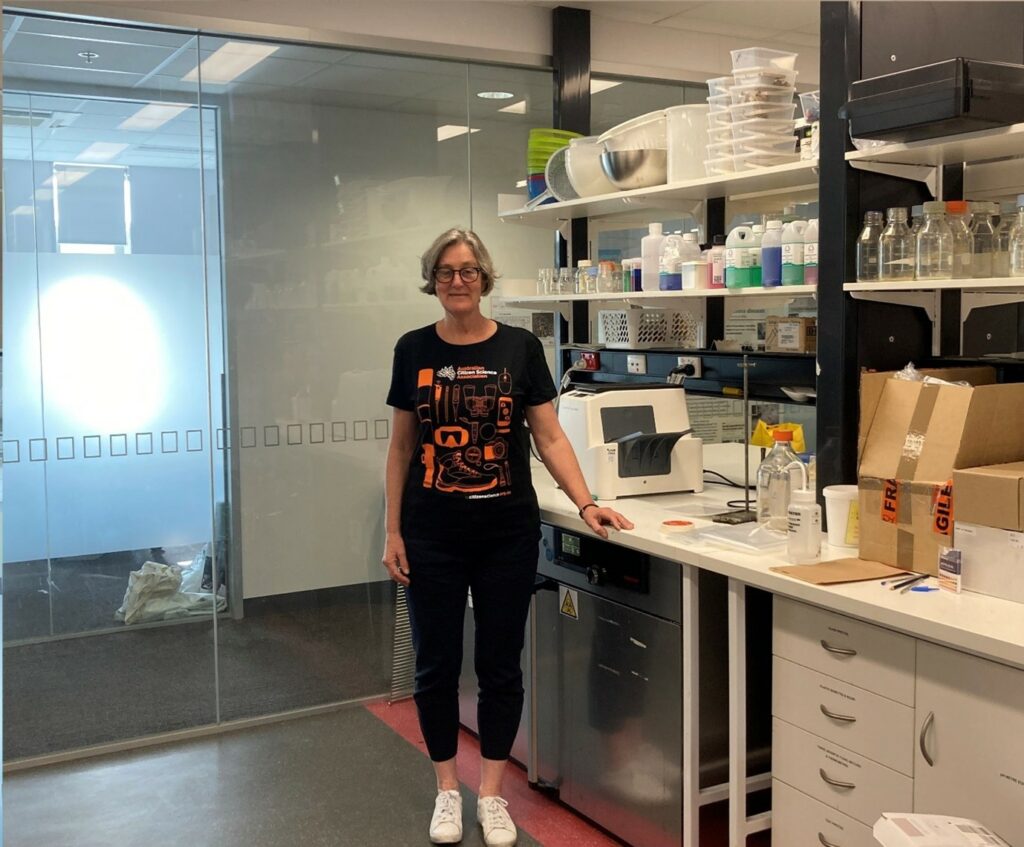We sat down with Professor Kirstin Ross – Flinders University who kindly shared her passion and interest in engaging remote communities to understand and improve environmental health issues, in particular with First Nations and Aboriginal communities.
What is your research area and why is Environmental Health important?
Gastrointestinal infection caused by a parasitic worm or nematode is common across Australia, primarily in remote and indigenous communities. We do not see transmission of the disease in mainstream Australia, but it is seen in other countries in areas of poverty and it can be deadly in people with a weakened immune system.
The worm is easily killed with an antiparasitic drug, but it is also easy for people to become re-infected, and so it’s essential we understand the real cause: poorly constructed and/or poorly maintained toilets, laundries, wastewater systems or inadequate rubbish collection creates poor sanitation. This disease shows the environment health hardware, drinking water, wastewater management, rubbish disposal and sewage, isn’t working if people are getting this disease. We should not have a disease such as this is in a wealthy country such as Australia.

What are the key environmental health issues affecting First Nations and remote communities?
A key issue is the lack of autonomy to make house renovations and restorations. Communities often know what is wrong or not functioning within their house, however the mechanisms to have those repairs done are not necessarily readily understood or adhered to. These problems within remote communities’ environmental health hardware are widely known about and we need to give communities autonomy on how they get these issues fixed.
Another crucial environmental health hardware issue is the provision of good quality and quantity drinking water and efficient wastewater removal. Clean and plentiful access to water is required to maintain cultural and living aspirations within their own communities, no one should have to move away from their community due not having enough water, appropriate sewage or poor or not enough housing.
How can these communities by engaged to address these issues?
We need to trust communities to know their own problem and their own solutions. It is essential we give remote communities control over housing design, construction, and maintenance, as well as funding allocation, governance and training opportunities.
During the Covid-19 pandemic, First Nations communities by and large controlled their own response, and the restriction of Covid-19 outbreaks within First Nations communities showed they did manage it really well. Policy makers need to trust Indigenous communities and give control over decision making and spending money in the way they wish. Consultation and co-design need to go one stage further to give ownership.
Is there a really interesting piece of environmental health or water-related research you’ve recently read?
“Environmental attributable fractions in remote Australia: the potential of a new approach for local public health action” – A fantastic paper where multiple health service providers across the Kimberley surveyed their patients and assigned individual environmental risk factors to each patient’s condition. Essentially, they calculated the percentage of chance the disease or illness was environmentally attributable, an example would be scabies which is 95% environmentally attributable due to poor water quality, sanitation and hygiene and home conditions, in comparison to Urinary Tract Infections which are only 10% environmentally attributable.
The aim is to better understand the environment’s impact on remote health and provide quantification, this allows clinicians looking at trends across communities rather than focus an individual actions. Their findings overall reaffirm the inequitable health conditions for Aboriginal people due to the poor environmental conditions, such as inadequate housing and inefficient rubbish removal, in which they have been compelled to live. If the majority of Australians had to experience that office conditions, home conditions or drinking water quality could cause more than 20% of all hospital visits, it would cause an uproar.
What do you think are the biggest challenges for communities regarding clean water access and wastewater management?
Firstly, the tyranny of distance. Many of these communities require remote access which causes both financial and logistical limitations. For instance, the call-out fees to repair or maintain plumbing, roads, rubbish disposal, become prohibitively expensive.
Secondly, there needs to be political will to make the changes we need: in an economically rich country such as Australia we have the capability to make these changes. We need to ensure sub-standard living environments, often the cause of environmental health issues, is not prioritised less than the clinical care required to treat it. Environmental health hardware is not often considered by many people in urban areas, it’s just an expectation that it happens efficiently.
Thirdly, the allocation of funding to improve infrastructure and housing across rural Australia, including on Aboriginal and First Nations land, should not be separated from the money allocated in urban areas, nor labelled as First Nations funding. All Australians deserve improvement in their environment and living conditions.
How do you think knowledge creation and research can create greatest impact to inform environmental health decision making?
We already know the answers to many of these environmental health issues, they have been studied extensively over decades. We need to ensure research is translated into action.